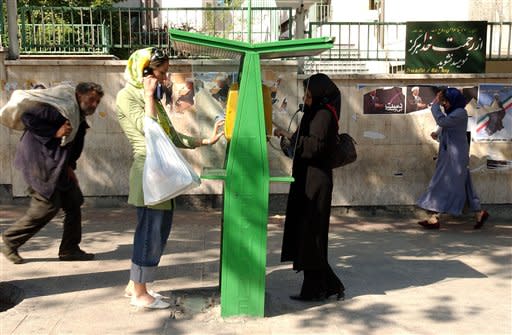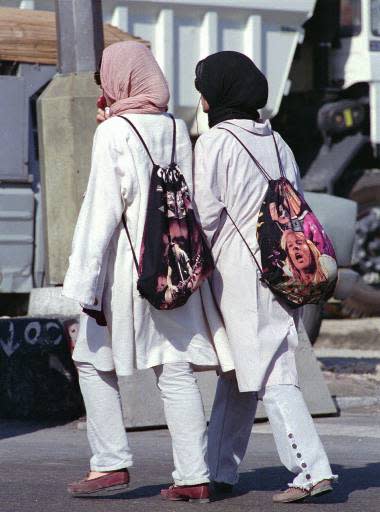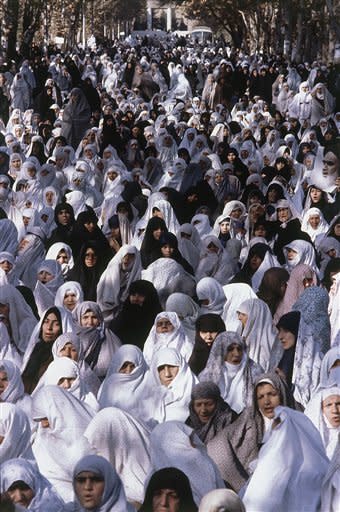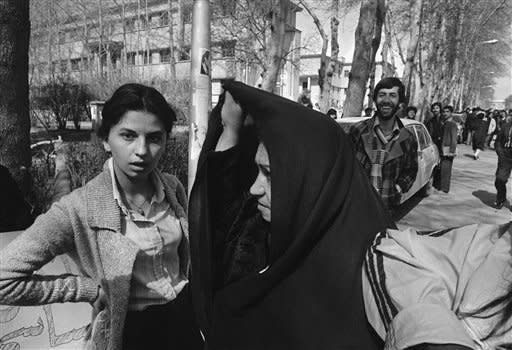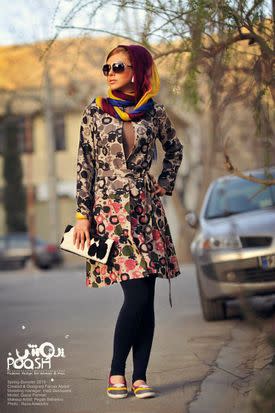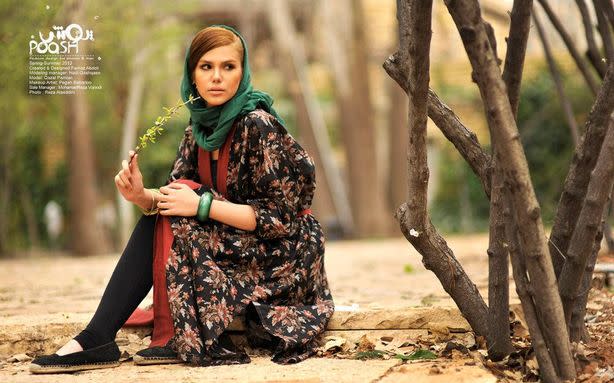The Fascinating Fashion Evolution of Iran's State-Imposed Modesty Garments
Fashion is not just frivolous consumerism, because what we wear is a statement about who we are — Ann Taylor pantsuits mean one thing, sweatshorts with words on the butt mean a different thing. It is harder to make that statement when you're working with state-imposed modesty garments. That's what the women of Iran are working with. The Iranian Culture and Islamic Guidance Ministry sets standards for fashion — the sleeve length, cut and fit of women's clothes, the style of men's haircuts. But Iran Wire's Azadeh Moaveni explains how Iranian designer Farnaz Abdoli has turned the state-required cloaks into fashion.
RELATED: Iran's Morality Police Don't Sound Very Fun
For her company Poosh, Abdoli's clothes look more casual and bohemian. She uses little floral prints you might see on dresses in Brooklyn. "Though her designs are often technically compatible with state dress codes, long and flowing with proper sleeves, they are still innovative, combining folds and dress, abaas and shalwar kameez, dresses and smocks, in fresh interpretations of what can be deemed permissible," Moaveni writes. Even so, Abdoli's spring collection was attacked by Bultan News as "the spring prostitution campaign."
RELATED: A Candidate's Cable Channel, an Airport's Avatar, and Woody Harrelson
In Iran, women's clothes have been a political issue since before the revolution in 1979. Back in the first half of the 20th century, women's clothes showed great variety: rural women wore a floral chador, secular and wealthier women wore Western clothes, and "the black chador was mainly worn in big cities by traditional and ultra-orthodox religious women." In the 1970s, things got more complicated:
The manteau only emerged in the 1970s as a political statement by young, educated women, many devoted to leftist or modern Islamist ideals. But after 1979, when the revolutionary government sought to impose black chador on all Iranian women, the meaning of both chador and manteau were transformed. In the early 1980s, a spectrum of women who might have looked nothing like each other on a pre-1979 street began to embrace the manteau as a compromise.
You can see all this stuff in archival photos from Iran. Here's are women demonstrating for equal rights in Tehran in 1979:
RELATED: Wheelchairs, Miguel Cabrera, and 'Impressionism and Fashion'
RELATED: Israel and the Big Bad Wolves
Demonstrations and counter-demonstrations in 1979:
RELATED: Is Iran Cleaning Up In Advance of Nuclear Inspectors?
But in 1996, women looked a little different:
And in 2005:
Moaveni writes that 15 years ago, her aunt took her to the bazaar to buy a big black manteau (cloak). "I felt like crying, in fact I probably did cry, when putting it on. I was young and wanted to look pretty. At least not as though I had been erased by a giant piece of black cloth." Her aunt said there were no other options. But Abdoli's designs show "just how much Iran has changed in the past 15 years, moving away from that old bazaar of homogeneity."
